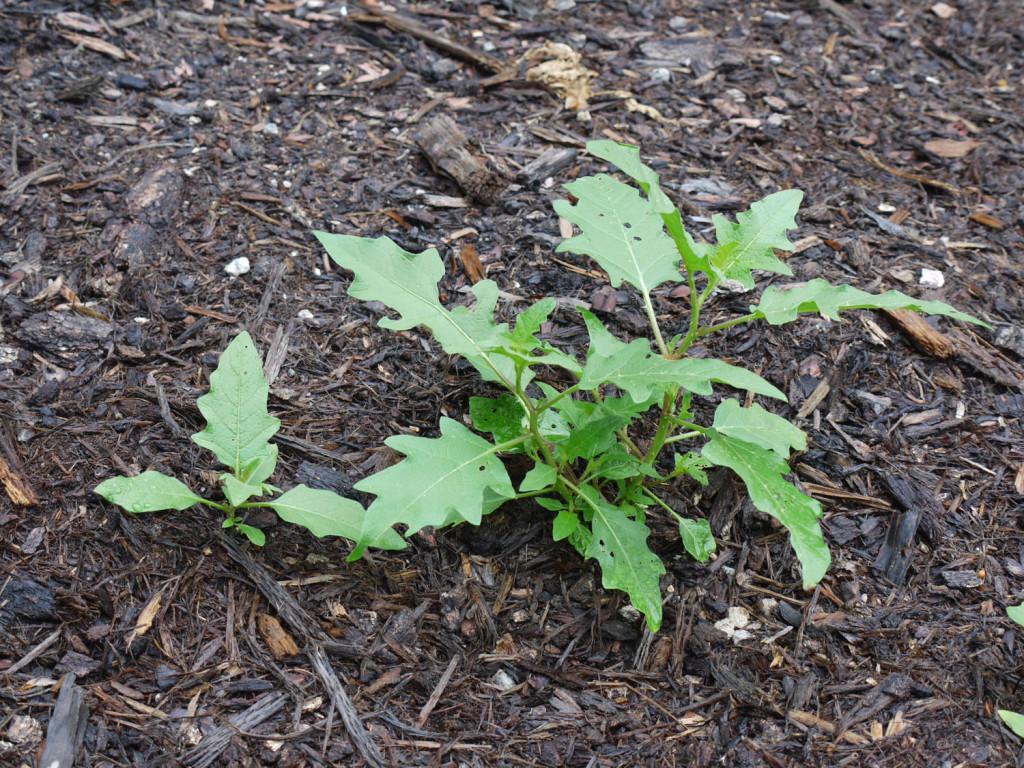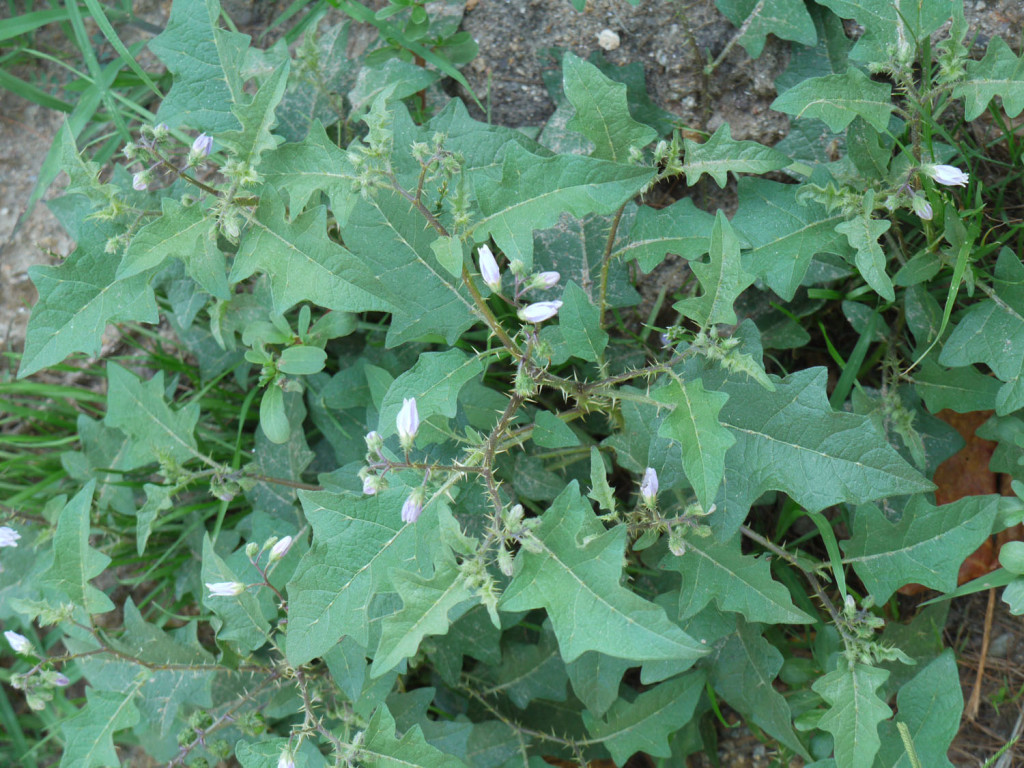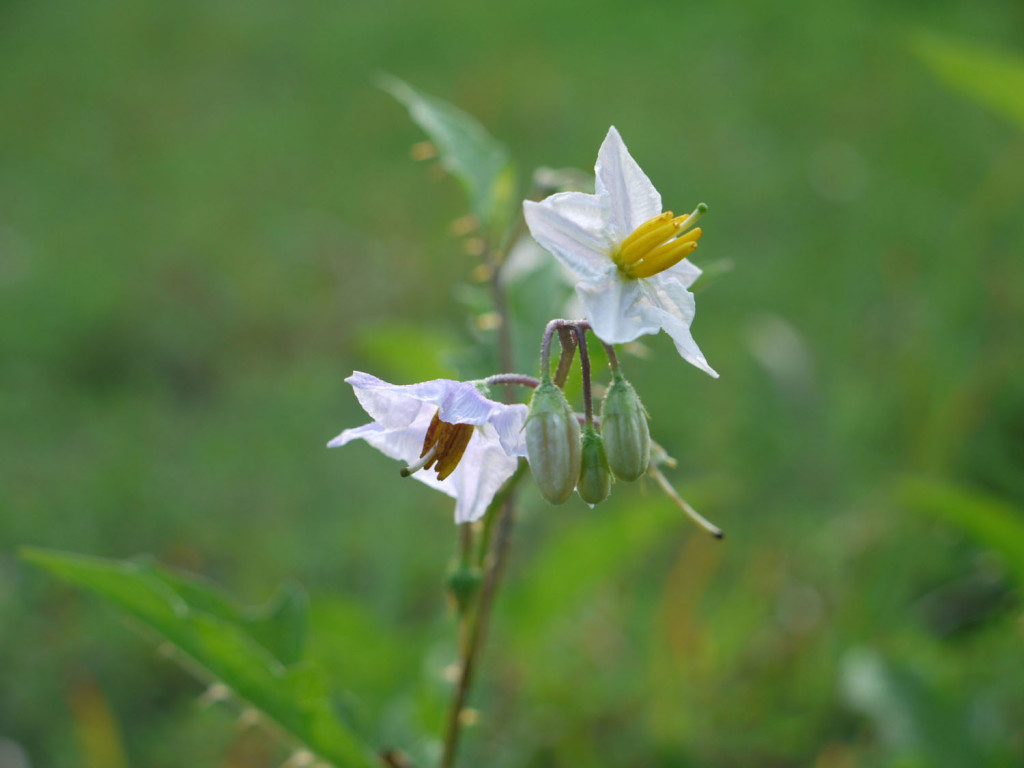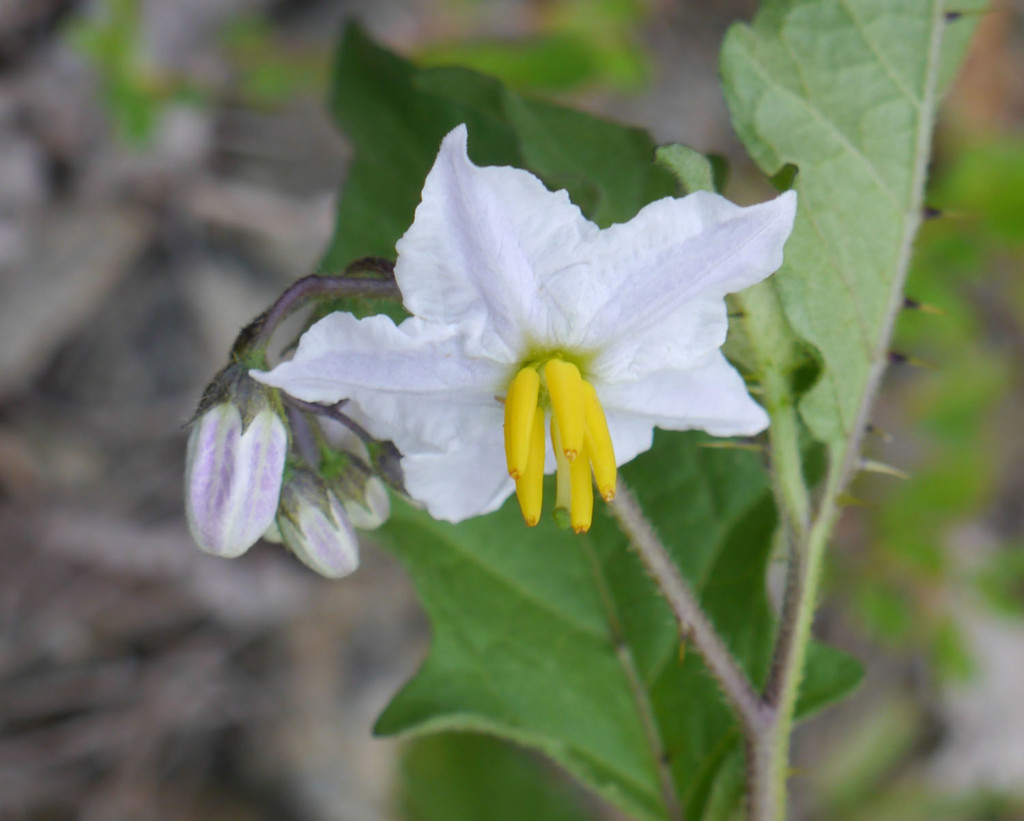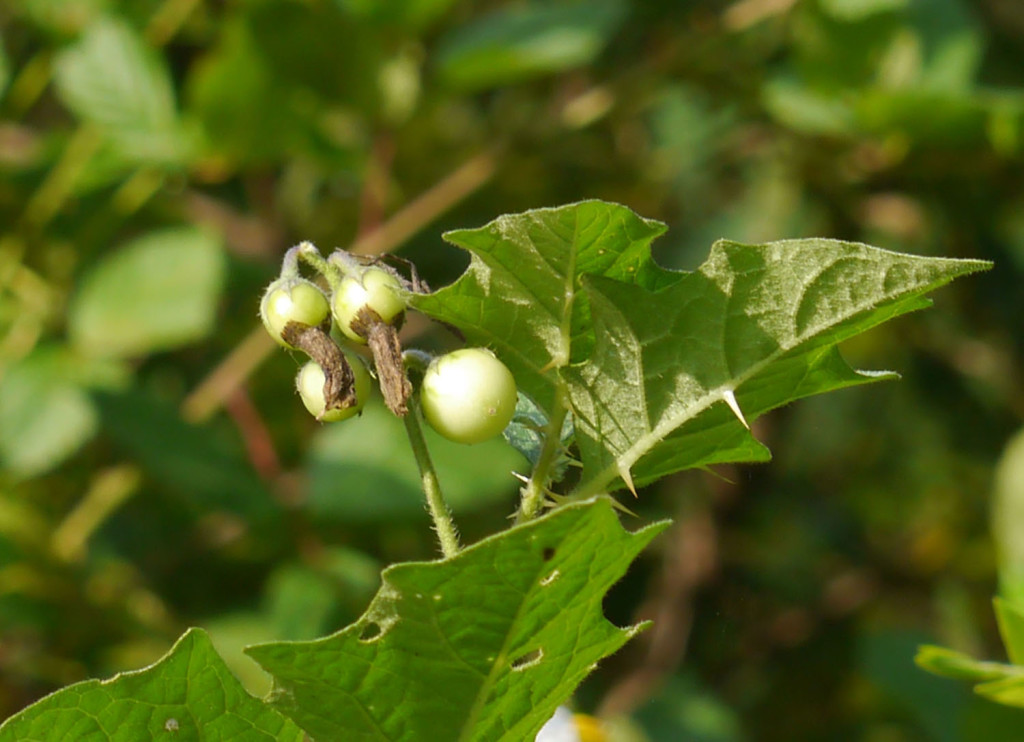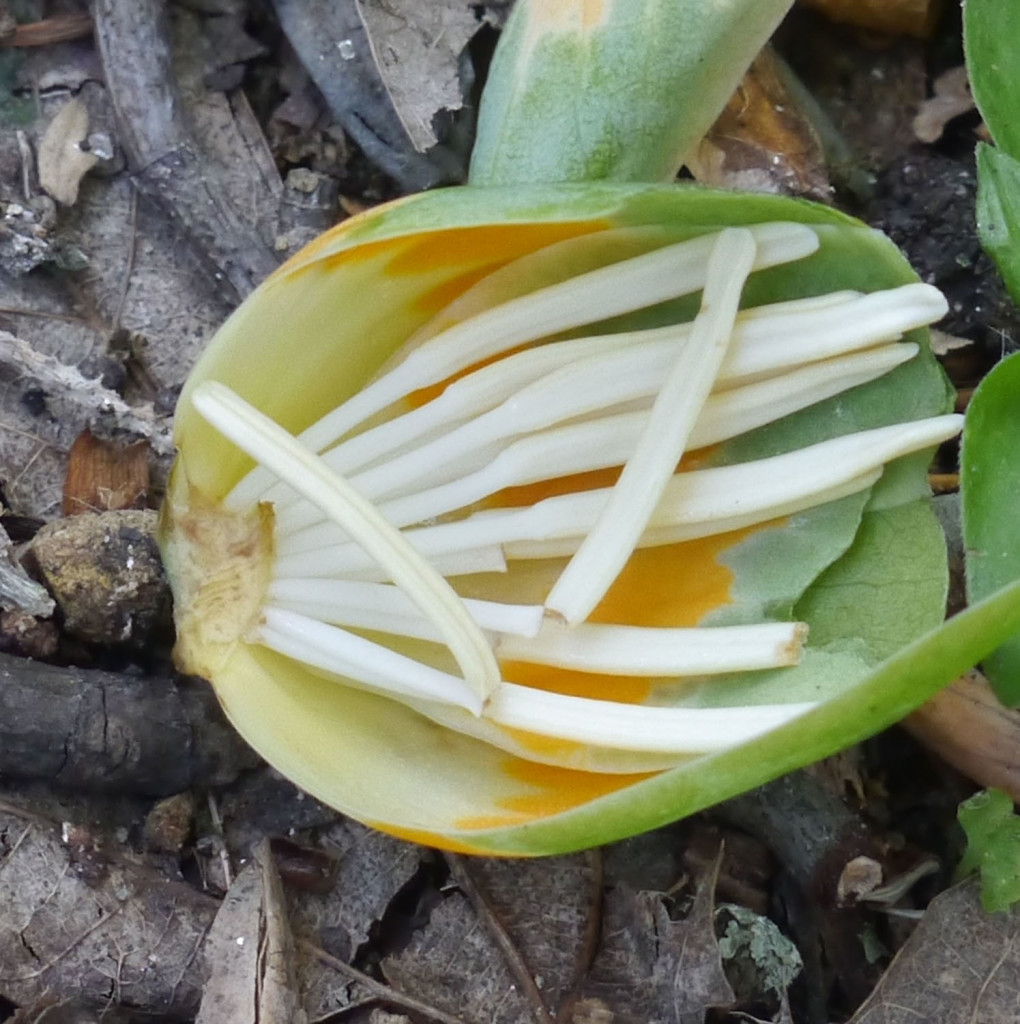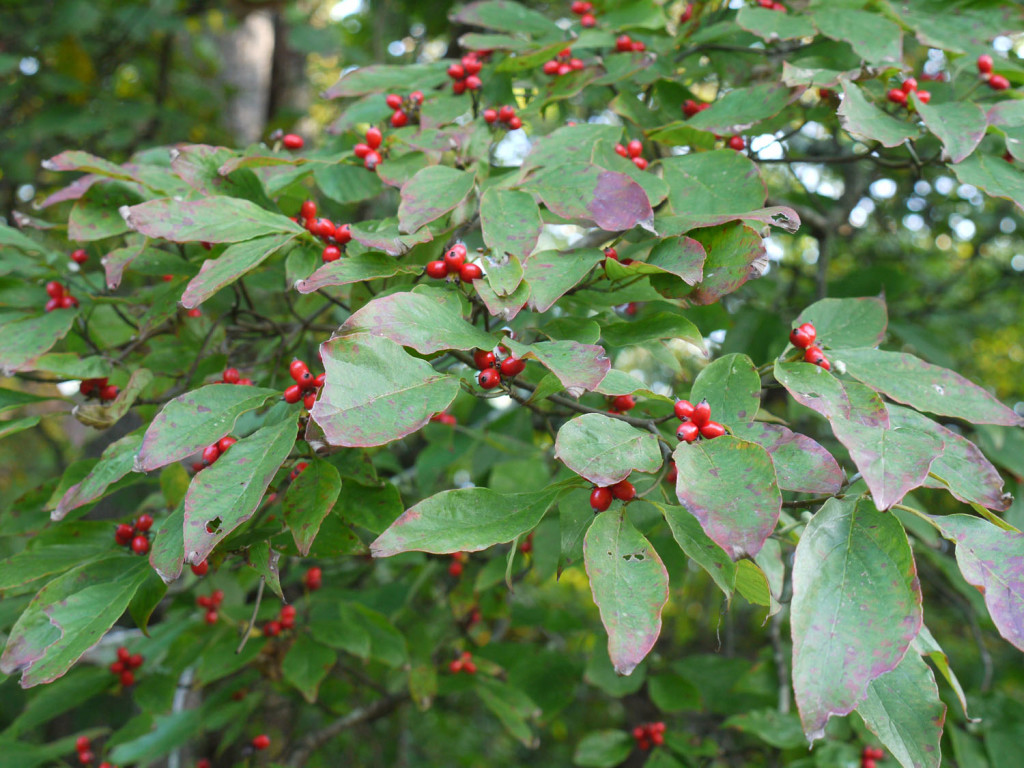 During the fall season you may see small trees with bright red berries. They might look like the tree above or like the next tree . . .
During the fall season you may see small trees with bright red berries. They might look like the tree above or like the next tree . . .
 As you approach closer to the tree, you begin to think you might have found a Spicebush (Lindera benzoin) . . .
As you approach closer to the tree, you begin to think you might have found a Spicebush (Lindera benzoin) . . .

. . . or a Flowering dogwood (Cornus florida).
 Let’s place photographs of the two sets of berries side-by-side to compare them closely.
Let’s place photographs of the two sets of berries side-by-side to compare them closely.
Both kinds of berries are bright red and shiny. Both are about the same size. Two differences are the arrangement of the berries and the actual shape. Flowering dogwood berries are in tight clusters while Spicebush berries have distinctive little stalks and tend to be more spread apart from each other. Also, the Spicebush berry is somewhat flattened along one dimension.
The confirmation comes from looking at leaves which might still be on the tree. Both plant’s leaves have pinnate venation. Flowering dogwood leaves have pointed tips while Spicebush leaves definitely have a rounded tip.
When no leaves remain on the tree, you can look at the leaf scars and branches to determine the leaf arrangement. Flowering dogwood (Cornus florida) has an opposite leaf arrangement.
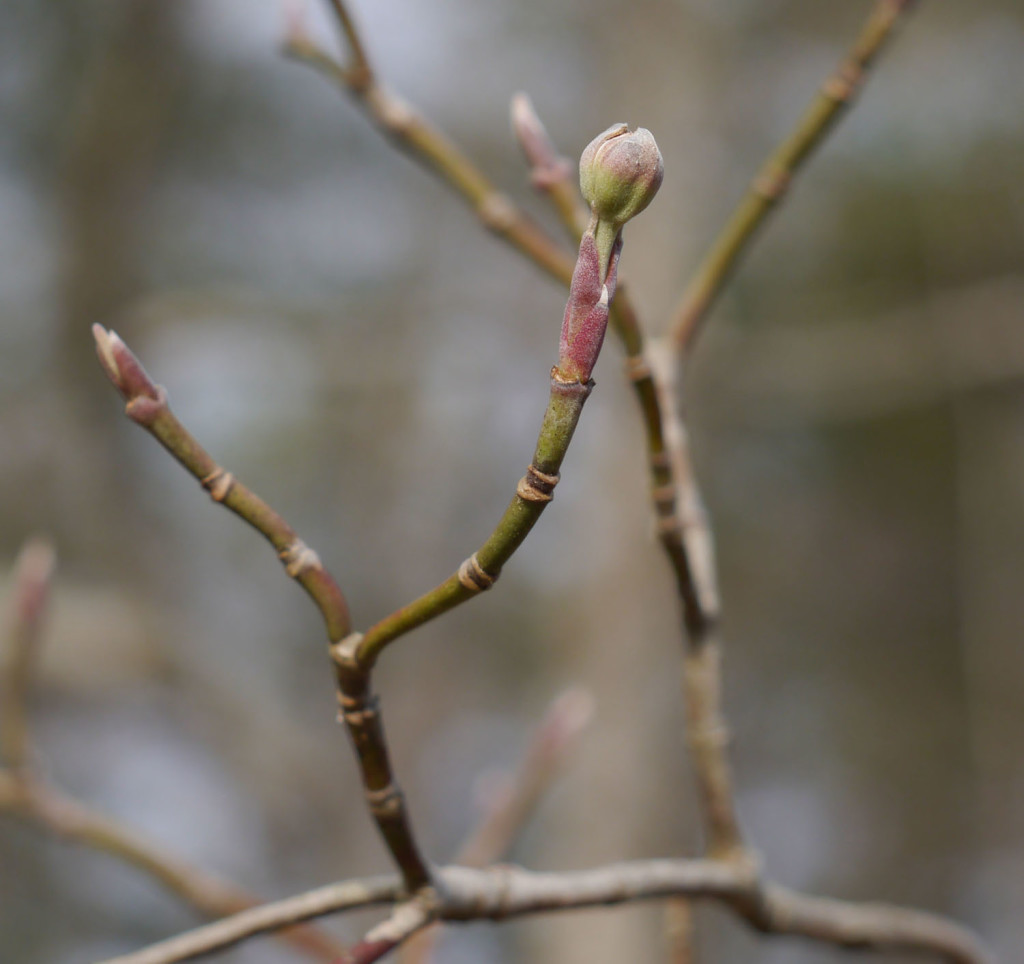 Spicebush (Lindera benzoin) has an alternate leaf arrangement.
Spicebush (Lindera benzoin) has an alternate leaf arrangement.
 Now that you know the similarities and differences between these two small trees, go back and look at the first four images in this post. Decide if the tree is Flowering dogwood or Spicebush. To confirm your choice, click on each photo. This will bring up a larger image of the photo and will also show you the name of the tree.
Now that you know the similarities and differences between these two small trees, go back and look at the first four images in this post. Decide if the tree is Flowering dogwood or Spicebush. To confirm your choice, click on each photo. This will bring up a larger image of the photo and will also show you the name of the tree.



